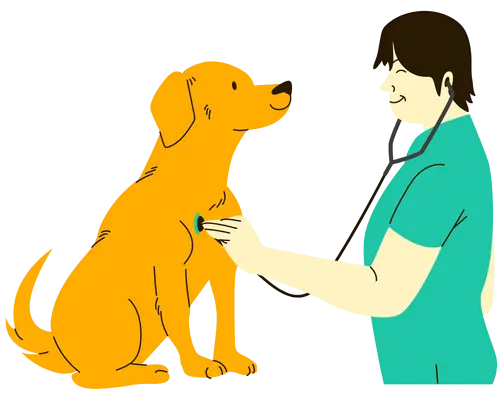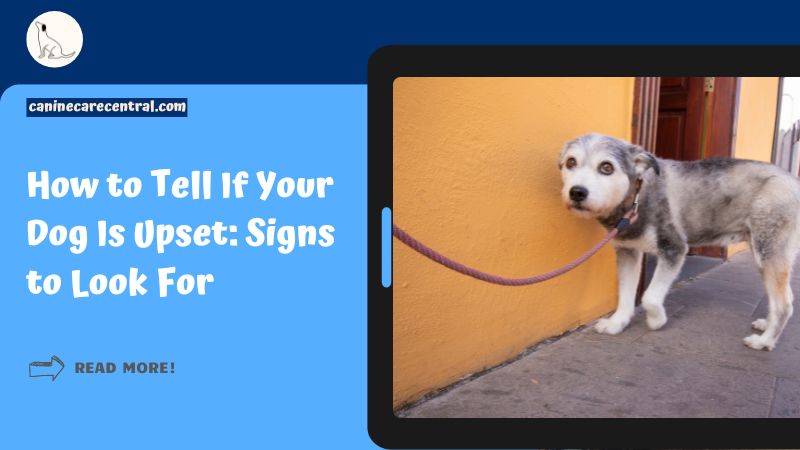Do you know what DOG ESSENTIALS you are missing out? Find out now!
Zack Keithy, our author, is a certified veterinarian technician (UC Blue Ash) for over 6 years (contact him here). The articles written here are based on his expertise and experience, combined with a review by our expert vet reviewers including Dr M. Tarantino. Learn more about us here.
As a pet owner, it’s common for you to come home and see your dog proudly presenting you with a “gift.”
Whether it’s a chewed-up toy, a stick they found on their walk, or worse, a dead rabbit, dogs seem to have a fascination with random objects.
A typical day can turn into a hunting spree when your dog chases and catches a rabbit in your backyard.
Regrettably, for the rabbit, your dog succeeded in capturing it, leaving you with the aftermath to deal with.
You probably never imagined that you would have to confront your dog’s predatory instincts until the day they pursued and killed a rabbit right in front of you.
What are the implications and what should you do now? Let’s dive right in.
Medical Questions? Talk to a Veterinarian 24/7.
Connect one-on-one with a licensed vet who will answer your questions in minutes.
*Article may contain affiliate links to retailers like Amazon and Chewy. Learn more on our disclosure page.
- Why Do Dogs Kill Baby Rabbits?
- What Should You Do if Your Dog Kills a Rabbit?
- How to Prevent Dogs From Eating Baby Rabbits?
- My Dog Killed a Rabbit and is Acting Weird
- What Dog Breeds Are Most Likely to Attack Rabbits? (Dog Breeds That Kill Rabbits)
- Can Killing a Rabbit Trigger a Behavior Change in My Dog?
- Can a Dog Get Sick From Killing a Rabbit?
- What is Tularemia in Dogs?
- Transmission and Symptoms of Tularemia in Dogs
- Treatment Options for Tularemia in Dogs
- The Risk of Tularemia Infection in Humans
- Frequently Asked Questions (FAQs)
- In Conclusion: My Dog Killed a Rabbit
Why Do Dogs Kill Baby Rabbits?

Did you know your furry best friend has a natural hunting instinct?
That’s right! Your pup’s wild ancestors used to hunt for food, and that hunting instinct is still alive and kicking in them today.
Now, not all dogs have the urge to hunt. It depends a lot on their breed and individual temperament.
But if your dog is a natural-born hunter, they get extra excited when seeing small animals like bunnies or mice.
And let’s face it. These little critters are easy targets because they are small and more vulnerable.
Doggy says, you might be keen to read this too: My dog killed a groundhog
What Should You Do if Your Dog Kills a Rabbit?
If your dog has killed a rabbit, you should take some steps to keep your pup and others safe.
Here’s how:
Check your dog’s vaccination status
Rabbits can carry diseases like tularemia (discussed a bit more later) which can transmit to your dog through bites or scratches.
Continually update their vaccinations to prevent potential infections.
Train your dog to control its prey drive
Training your dog to control its prey drive can also help prevent future incidents.
It can involve teaching your pup basic obedience commands like “stay” or “leave it” or using positive reinforcement techniques to discourage chasing or hunting behaviors.
Keep track of potential tapeworms
Observe signs like vomiting and diarrhea.
And inspect your dog’s feces for small, rice-like segments.
These would contain tapeworm eggs and can be visible to the naked eye.
Monitor for fleas and ticks
Keep an eye out for fleas and ticks.
These pesky critters can hitch a ride on your dog after a successful hunt and potentially infect them with diseases.
Talk to your vet about the best treatment if you see any signs of infestation.
Dispose of the rabbit’s body properly
Proper disposal of the rabbit’s body is crucial for hygiene and to prevent attracting other animals.
You have two options for disposing the dead rabbit:
First, you can wear gloves to pick it up and place it carefully into a plastic bag. After that, double-bag the rabbit and throw it away in the garbage.
Or, you can use a shovel to bury it in a secure location. Make sure that it is deep enough not to cause any unwanted smell.
You don’t want any unwanted visitors sniffing around your backyard, do you?
Consider using a leash or a fenced area
If you’re worried, consider using a leash or a fenced area to keep them under control.
Ensure the fence is high enough so the dog cannot jump over it and escape from your yard.
Get help from a professional dog trainer
If you need help with how to proceed, feel free to seek help from a professional dog trainer.
They can provide valuable advice and guidance to help manage your dog’s natural hunting instincts.
How to Prevent Dogs From Eating Baby Rabbits?
You know that dogs can be unpredictable.
And as mentioned earlier, they are naturally inclined to hunt small animals like baby rabbits.
But, you can do something to prevent it.
The following tips can help keep your dog from eating baby rabbits, which will benefit both your dog and rabbits.
Keep your dog on a leash or in a fenced area
Keep them on a leash or in a fenced area when you’re outside with your dog. It will help prevent them from wandering off and finding a rabbit nest or burrow.
Train your dog to leave wildlife alone
Teaching your dog to ignore wildlife is a necessary part of their training. Whether it’s a rabbit or other animals, it’s important to make sure your dog knows not to chase or harass any wildlife.
Start using positive reinforcement to encourage good behavior and discourage hunting behavior.
Remove any nearby rabbit nests or burrows
If you know rabbit nests or burrows are in your yard or nearby, remove them as soon as possible.
It will help prevent your dog from finding and eating baby rabbits.
Use natural repellents to deter rabbits
Natural repellents like vinegar or cayenne pepper can help deter rabbits from entering your yard. Sprinkle them around the areas where you’ve seen rabbits.
Supervise your dog
Always supervise your dog when they’re outside. Keeping a watchful eye on them will help you catch any hunting behavior before it becomes a problem.
Hey there, sorry to interrupt but I wanted to tell you about an online vet service I’ve been using for years.
An in-person visit with one is great, but it’s not always an option.
Now, thanks to technology, you can speak to one without leaving your home.

Got something to ask a vet?
Talk to one anytime, 24/7.
* Don’t use this service for emergencies.
Alternatively, a vet can come out to you instead (exclusive to our readers: use THEVETS15 for 15% off).
SCHEDULE AN APPOINTMENT HEREThank you. The rest of the article continues below.
My Dog Killed a Rabbit and is Acting Weird
After your dog has caught a rabbit, you might notice some changes in their behavior.
They may display heightened excitement, restlessness, or even possessiveness over the carcass.
This is entirely normal and can be attributed to their instinctual response.
Some dog owners may feel that their dogs look guilty or remorseful after such an event, but honestly, it’s not true.
Our canines do not possess the capacity for guilt or remorse like humans do.
What you might perceive as guilt is often your dog reacting to your emotional state.
They can sense your displeasure, and this can lead to submissive behavior.
What Dog Breeds Are Most Likely to Attack Rabbits? (Dog Breeds That Kill Rabbits)
If you have had a dog for quite some time, you know now that not all dog breeds will necessarily attack rabbits.
And you know some factors can affect your pups’ mood.
Training, socialization, and individual temperament can play a role.
Additionally, understanding their natural tendencies and taking proper precautions can prevent these types of incidents.
Here are some dog breeds you might want to watch:
Greyhound

Due to their impressive speed and agility, Greyhounds have proven to be exceptional hunters. Unfortunately, this also means they may be more likely to chase and attack rabbits.
Jack Russell terrier
Breeders originally bred Jack Russell Terriers to hunt small animals like rabbits, which gave them a high prey drive. Although they can make excellent pets, they might possess an innate instinct to chase and attack rabbits.
Rat terrier
Like Jack Russell Terriers, breeders produce Rat Terriers to hunt small animals. These dogs have a reputation for being tenacious and could be more inclined to chase and attack rabbits.
Beagle
Beagles originally reproduce to hunt rabbits, so it’s no surprise that they may be more likely to chase and attack them.
Basset hounds
Breeders developed Basset Hounds to hunt small animals. Despite not being as fast as other breeds, they compensate for it with their resilient sense of smell and natural tendency to pursue and prey on rabbits, making them highly effective hunters.
Coonhounds
Coonhounds, bred specifically for hunting raccoons, possess the speed and agility to catch other small prey like rabbits. Their hunting instincts extend beyond raccoons, making them versatile hunters.
Dachshunds
Dachshunds hunt badgers and, with nature, hunt smaller animals like rabbits. Their unique body shape and size could give them an advantage in accessing rabbit burrows.
Australian Cattle Dogs
Australian Cattle Dogs are herding cattle with an innate tendency to chase and attack small animals like rabbits. With their high energy levels and strong prey drive, they possess the skills needed to pursue their prey.
Can Killing a Rabbit Trigger a Behavior Change in My Dog?
Yes, it’s possible!
Let me explain.
When your dog catches and kills prey, it can give them a huge rush of excitement.
This rush can reinforce their natural hunting instinct and make them more interested in chasing and killing small animals like rabbits.
It causes them to become more interested in chasing small animals.
And make them more aggressive or territorial.
But wait, there’s more!
Killing a rabbit can also affect your dog’s mood and energy levels.
It can make them restless or anxious, leading to other behavioral issues.
This isn’t to say that all dogs will experience behavior changes after killing a rabbit.
It depends on your pup’s training and temperament.
Still, be aware of the potential risks to prevent any terrible outcomes.
Doggy says, you might want to read this too: My dog sniffs other dog then attacks
Can a Dog Get Sick From Killing a Rabbit?
Yes. Your dog could suffer from severe diseases from killing a rabbit.
Here are 5 concerning illnesses that your dog could contract:
- Rabies is a viral disease. It can be transmitted to dogs through a bite from an infected rabbit.
- Tapeworms are intestinal parasites that can attach to a rabbit’s muscle tissue. Your dog can contract tapeworms by eating infected rabbit meat or ingesting a tapeworm-carrying flea.
- Various Infections. If your dog bites a rabbit, they are possibly exposed to parasites and bacteria in the rabbit’s body. Rabbit meat commonly contains pathogens like salmonella, E.coli, and listeria.
- Coccidiosis is an intestinal tract infection that your dog can get from ingesting contaminated rabbit feces.
- The Plague is a rare bacterial disease that rabbits can carry, although the chances of a dog getting it from a rabbit are very low.
- Tularemia, also known as rabbit fever, is a bacterial disease that can cause infection in your dog’s body.
What is Tularemia in Dogs?
Other names for this disease are deer fly fever or rabbit fever.
And did you know that the culprit is a tiny living bacteria called Francisella tularensis?
It produces toxins that can get into your pups’ bloodstream and cause a lot of harm.
There are three types of organisms, and differ based on severity:
- Type A causes rapid and severe diseases.
- Type B causes milder symptoms but may lead to chronic infection.
- Type C is less common and less severe.
It’s found most commonly in North America and Europe, especially during late spring or summer.
Transmission and Symptoms of Tularemia in Dogs
This tricky bacterial infection can affect your dog in some not-so-fun ways.
It can be transmitted to your dogs in three different ways:
- Your dog can get tularemia by contacting an infected rabbit or rodent.
- If your dog gets bitten by an insect, like a tick, that carries the bacteria.
- Through contaminated soil, if your pup likes digging or chewing on things outside.
If your dog contracts tularemia, you might notice some symptoms like what humans get.
Symptoms such as:
- Fever (temperature above 101 degrees Fahrenheit)
- Swollen lymph nodes (especially around the neck and groin area)
- Loss of appetite
- Skin ulcer
- Diarrhea
- Headache
- Muscle aches
- Lethargy
- Depression
It would be best to catch these symptoms early, so your furry friend can get the treatment they need to feel better.
Treatment Options for Tularemia in Dogs
Several treatment options are available if your dog is positive for tularemia.
Antibiotics
The primary treatment for tularemia is the use of antibiotics.
Your vet will select the appropriate antibiotics for your dog’s treatment. Your vet will consider your pet’s general health status and the severity of the tularemia infection.
The antibiotics typically prescribed to cure tularemia includes:
- Doxycycline
- Gentamicin
- Streptomycin
Supportive Care
Besides antibiotics, your dog may need supportive care to manage their symptoms and aid in their recovery.
It includes:
- Fluid therapy
- Nutritional support
- Pain management
Prevention
Prevention is vital when it comes to tularemia.
To reduce the chances of your dog getting infected with this illness.
It would be best if you took the following measures:
- Use tick-prevention products
- Keep your dog away from dead animals
- Wear gloves when handling infected animals
If you suspect your dog has tularemia, seek vet care immediately.
Most dogs will recover from this disease with prompt treatment and supportive care.
Also, you can help keep your pup safe by taking proactive steps to prevent infecting tularemia.
The Risk of Tularemia Infection in Humans
Although tularemia is relatively uncommon in humans, knowing its risks is a wise move.
This rare bacterial infection can be severe, causing many symptoms impacting your quality of life.
Whether camping, hiking, or enjoying the outdoors, you must be aware of tularemia’s potential risks.
Always take precautions to safeguard yourself from this infectious disease.
Here are some facts to know about the risk of tularemia infection:
Transmission
- Bites from infected ticks and deer flies
- Handling infected animal carcasses
- Drinking contaminated water
- Inhaling aerosolized bacteria.
Symptoms
- Fever
- Chills
- Headache
- Muscle aches
- Joint pain
- Dry cough
Diagnosis and Treatment: Through blood tests, cultures, or other laboratory tests. Treatment typically involves a course of antibiotics.
Prevention
- Protect yourself from ticks and insect bites.
- Avoid handling dead animals
- Avoid drinking untreated water from streams and rivers.
Taking appropriate precautions and seeking prompt treatment if you develop symptoms can minimize your risk of serious complications.
Frequently Asked Questions (FAQs)
Is it normal for dogs to chase and kill bunnies?
It’s normal for dogs to chase and kill rabbits. It is because it’s a part of their instinct. Their strong hunting drive compels them to act like this despite how unpleasant the behavior is.
Can a dog get rabies from killing a rabbit?
Yes, dogs can get rabies from killing a rabbit. Rabies is a viral disease transmitted through the blood or saliva of an infected animal, including rabbits.
What happens if my dog eats a dead rabbit?
If your pup eats a dead rabbit, it could catch diseases like tularemia or other serious illnesses. Eating the rabbit could also upset their tummy and cause them to vomit or have diarrhea.
In Conclusion: My Dog Killed a Rabbit
The thing is, it is not uncommon for dogs to have a natural instinct to hunt and kill small animals such as rabbits.
However, as responsible pet owners, we need to supervise our dogs and take necessary measures to prevent them from causing harm to other animals.
Let’s also educate ourselves on local laws and regulations regarding pets and wildlife too.
For more dog behavior articles, check these out:
- Why does my dog put his butt on me?
- Why is my puppy humping at 12 weeks?
- Why does my dog put food in its mouth then spit it out?
You’ve made it to the end, but I hope it’s not the end of our journey. We want to hear your voice! Share your thoughts, problems, suggestions, or anything related to your dog in the comments section. And don’t forget to join our newsletter today too.



